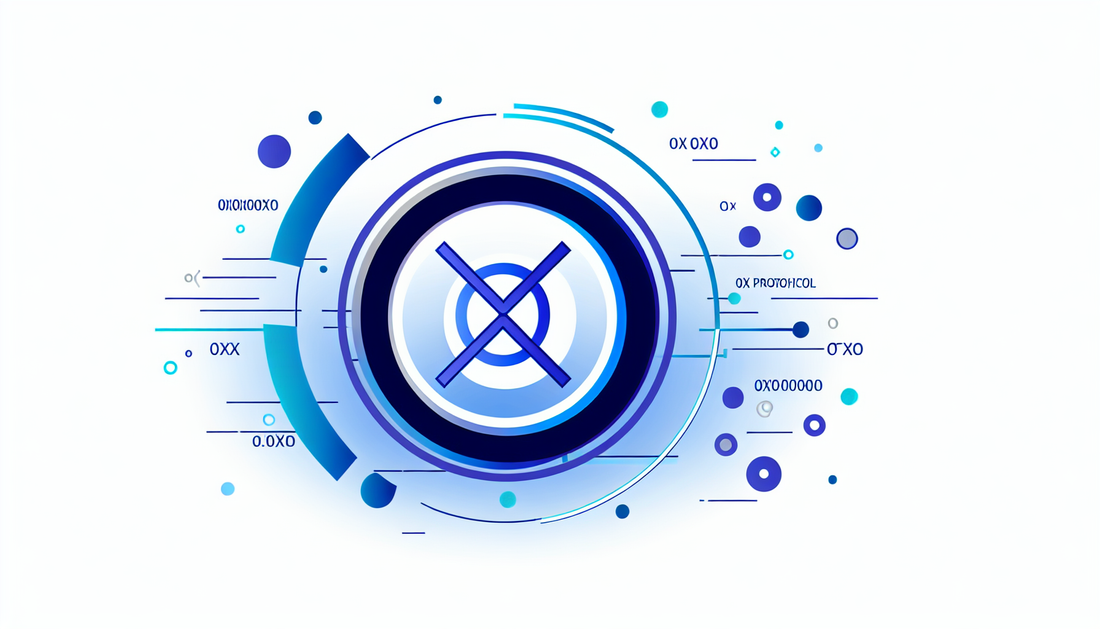
Unlocking DeFi: The Power of 0x Protocol
Share
0x Protocol (ZRX) serves as a fundamental piece in the decentralized finance (DeFi) ecosystem, enabling the Ethereum blockchain to offer low-friction, trustless trading of its native tokens. But how exactly does this protocol work? Let's delve into the mechanics that govern this decentralized exchange infrastructure.
The 0x Protocol essentially acts as an open standard for building decentralized exchanges using Ethereum smart contracts. At its core, it provides the necessary components and frameworks for developers to create their own DEX solutions, which can be tailored to the unique needs of various digital assets within the Ethereum network.
One of the primary features of the 0x Protocol is its off-chain order relay with on-chain settlement. This hybrid approach is pivotal in reducing the gas costs associated with every transaction, a common problem in pure on-chain systems. In the 0x system, users create orders off-chain, which are broadcast through a relayer network. Only the actual value transfer gets settled on-chain, meaning the Ethereum blockchain only processes the final transaction, thereby minimizing on-chain operations.
Relayers play a crucial role in this process by maintaining open-order books and broadcasting them to potential market participants. They ensure that the buyers and sellers find each other efficiently. While relayers facilitate discovery, they do not have any control over user funds. The execution of trades remains decentralized, relying on the Ethereum blockchain's secure and transparent settling mechanism.
Another significant feature of 0x is its extensibility through modular smart contracts. These contracts are designed to be upgradable, meaning new features can be introduced without disrupting the existing ecosystem. This flexibility is one of 0x's strengths, allowing it to adapt to the evolving landscape of DeFi.
The protocol is governed by ZRX token holders, who can vote on changes and upgrades, thereby ensuring that decision-making aligns with the community's best interests. Like other decentralized governance models, this promotes a democratic approach to protocol evolution. For insights into decentralized governance structures, the article "Decentralized Governance: Navigating the NEW Crypto Landscape" provides a thorough perspective [here](https://bestdapps.com/unlocking-potential-the-future-of-web3-decentralized-9-28-2023).
A key use case of the 0x Protocol is in facilitating token swaps within the Ethereum ecosystem. Traders benefit from better liquidity and price efficiency, given that the protocol aggregates liquidity from different DEXs and sources. This functionality is similar to other DeFi protocols aimed at enhancing cross-chain interoperability, which you can explore in "The Overlooked Frontier of Decentralized Data Governance: Enhancing Web3 Interoperability through Collaborative Protocols" [here](https://bestdapps.com/blogs/news/the-overlooked-frontier-of-decentralized-data-governance-enhancing-web3-4-15-2023).
In conclusion, the 0x Protocol enhances Ethereum's capacity as a decentralized exchange platform by providing a low-cost, flexible, and community-governed infrastructure. For those looking to enhance their decentralized trading experience, joining a platform like Binance can broaden available opportunities [sign up](https://accounts.binance.com/register?ref=35142532).
